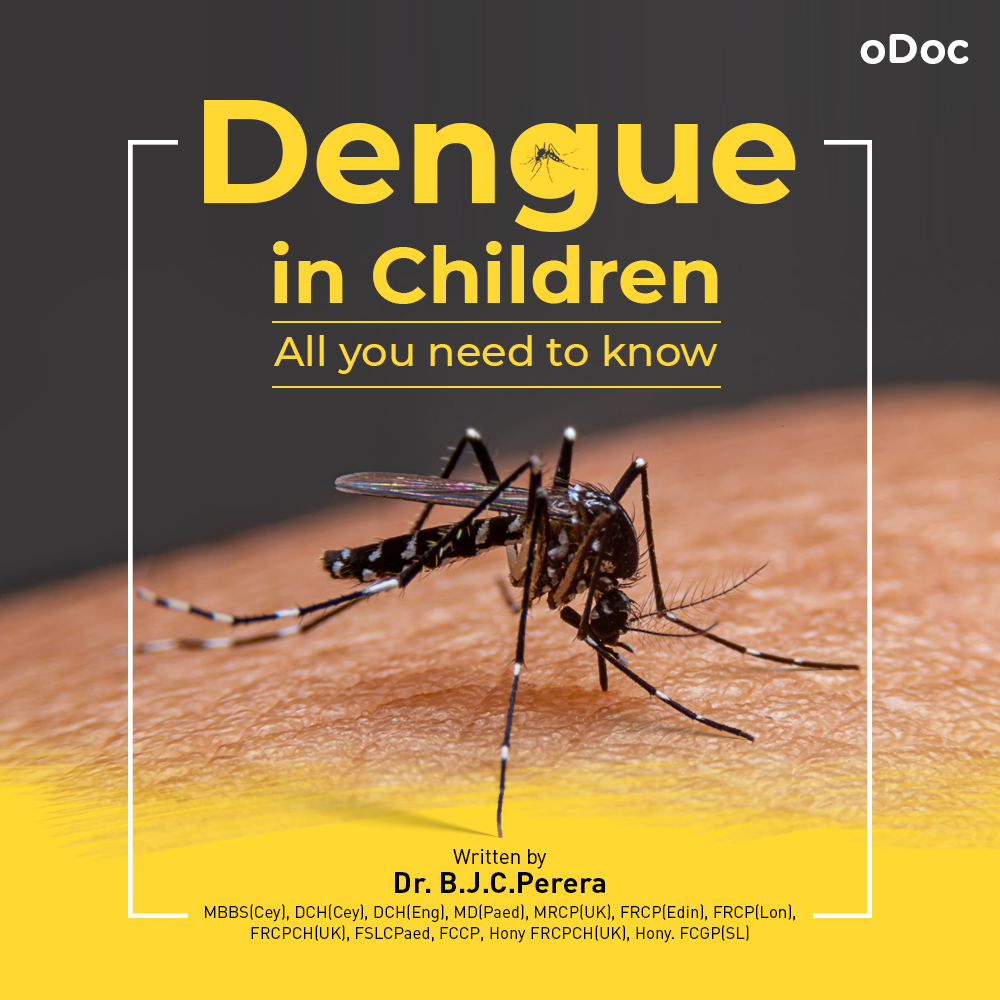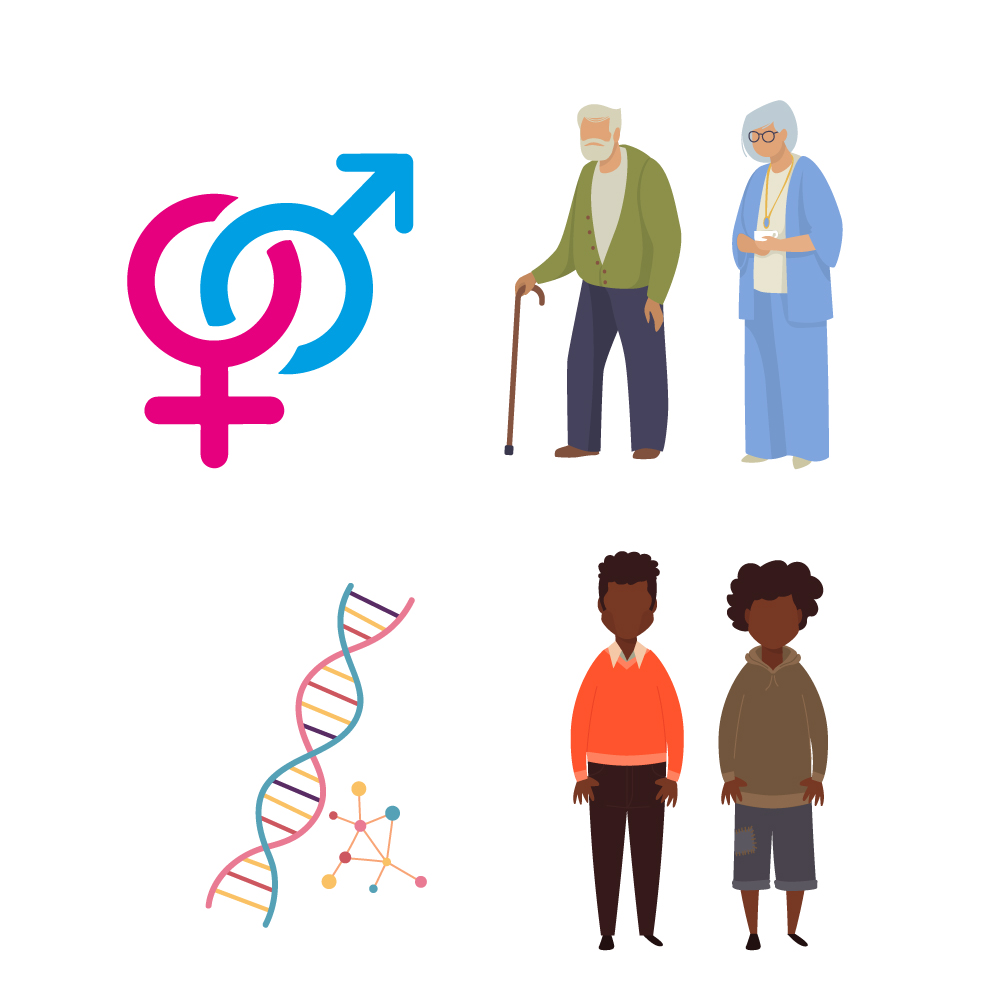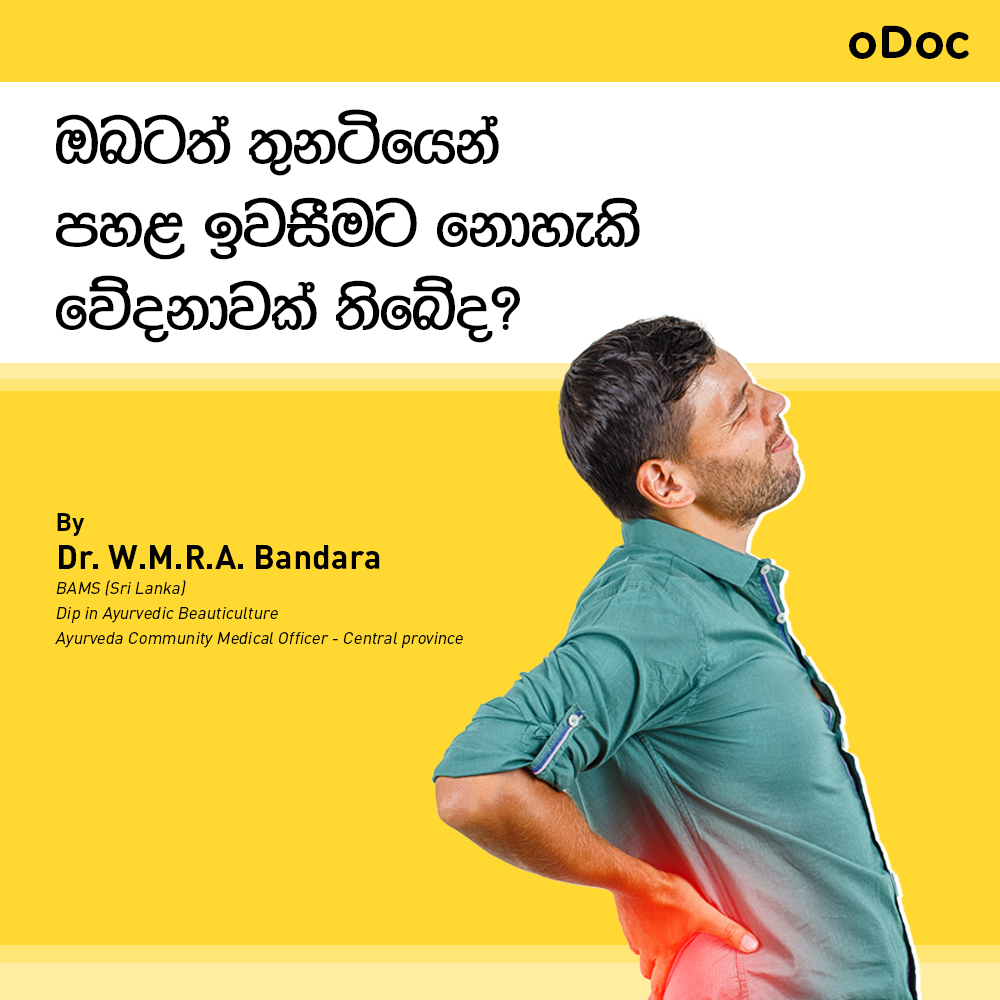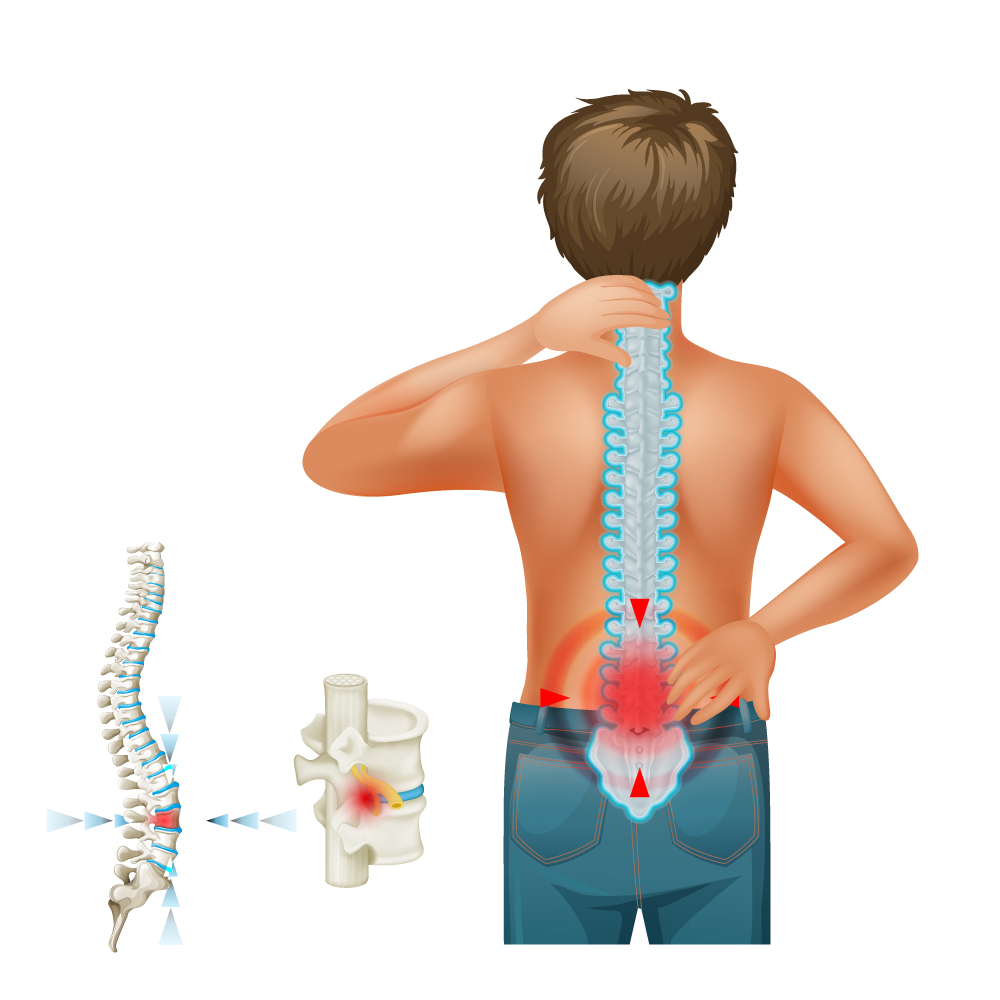Dengue in Children
Written by Dr. B.J.C. Perera
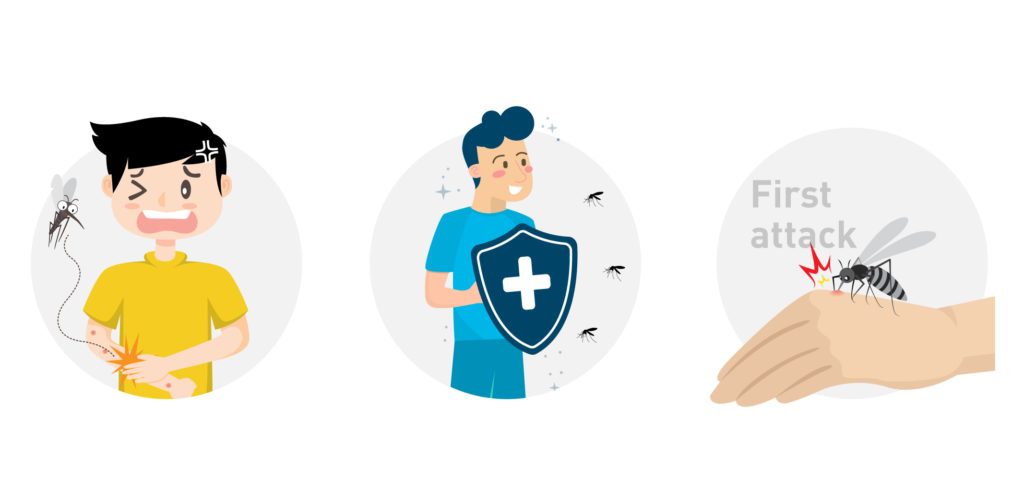
There have been reports of high rise in cases of Dengue in Colombo and other parts of the country over the last several years. Dengue is a disease that could affect children and adults, and affects people irrespective of caste, creed, religion, or social status. The word Dengue is derived from the word “Ka – Dinga pepo” in the Swahili language and is pronounced as Dengi. The word in Swahili refers to an illness with cramps. One of the cardinal features of the disease is severe muscle pain, and perhaps the word was derived from Swahili to denote this important clinical feature. At other times, the condition has been called “break-bone fever” as well, referring to the intense limb pains associated with it.
The virus that causes Dengue was isolated in the 1940s, and there are four types of the virus that causes the disease in humans. Outbreaks of the disease are due to one or more of these four serotypes. The disease is transmitted by one of two species of mosquitoes known as Aedes aegypti and Aedes albopictus. The disease has a vast range of severity and presentation. In some children, it could present as the ordinary flu or viral fever, while in others, it could be a severe life-threatening illness. It depends on several factors such as the virulence of the infecting virus, the immunity of the individual, and whether it is the first attack or not. Attack by one type of virus does not confer immunity to the other three types. When there are second, third, and fourth attacks of Dengue in an individual, the incidence of the complications increases. This is due to the production of a type of antibody by one strain of the virus that enhances the effects caused by another strain. Some of these antibodies are not protective but augment the complications and deleterious effects of the other strains of the virus.

Symptoms and Signs of Dengue
Dengue fever starts just like any other viral fever. It commences with a high swinging fever, often associated with intense muscle and joint pains. The fever usually responds poorly to simple fever-lowering medications like paracetamol. The child may feel ill at times of fever, but in milder cases, especially when it is the first attack, the child may not feel too bad. After a couple of days, the fever appears to get better, only to flare up again within a day or so. This is generally known as a saddle-back type of fever. This second phase is the one that is associated with the dreaded complications of the disease.
Complications arising through Dengue
The dengue virus induces a peculiar increase in permeability characteristics of the blood vessels leading to uncontrolled fluid movement from the bloodstream to the surrounding tissues. It is also known as the “leaking” of fluid from the bloodstream into the adjacent areas and is commonly referred to as the “leaking phase.” This situation leads to reduced fluid within the circulating compartment and is associated with a fall in blood pressure and cardiovascular malfunctioning. The patient presents in a state of collapse or shock. This is known as the “Dengue Shock Syndrome.”
In addition, the virus causes a certain amount of direct damage to the blood vessels, which leads to a bleeding tendency. The disease also causes a fall in the platelets of the blood, enhancing the bleeding as platelets are intimately involved in the clotting processes of normal blood. This is known as “Dengue Haemorrhagic Fever.” The bleeding manifests as spots on the skin or internal haemorrhage, particularly in the stomach and intestines, and this presents as brownish or blackish “coffee grounds” material in the vomitus or black faeces.
In some rare cases, the heart is affected, leading to a complication known as myocarditis which leads to heart failure. This particular complication can be troublesome and needs to be managed very carefully. All these complications are associated with an increased rate of fatalities. However, with competent management, these fatalities could be reduced drastically.
It is essential to point out that the child remains conscious and alert throughout the illness, even when they are quite ill with the dreaded complications. These complications cause death and are much more common during second and subsequent attacks of the disease. The standard, uncomplicated form starts with a high fever and vomiting, and the patient generally feels unwell. The period around the 4th to the 7th day is crucial for the development of the complications. However, many affected individuals go through the illness just like any other form of flu and recover without any problems. However, the more severely affected children feel quite ill, especially during the late phase of the disease that comes on after 3 to 4 days.
Diagnosis could be quite tricky in the early stages
It is noteworthy that a definitive diagnosis could be quite tricky in the early stages of the disease. Although some sophisticated tests such as NS1 Antigen Test could detect the virus even in the first couple of days of the illness, these are not fool-proof and is expensive. These tests detect the virus’s genetic structure using a technique known as the Polymerase Chain Reaction or PCR. The standard blood counts show typical features of any viral infection in the first couple of days. Subsequently, these counts show thickening of the blood caused by an uncontrolled shifting of fluids out of the bloodstream and a fall in the platelet count. The tests to detect antibodies become positive from about the 3rd or 4th day but once again, they are not fool-proof. Negative antibody test does not exclude dengue fever. A characteristic feature in the leaking phase is developing a collection of fluid in the chest around the lung, particularly on the right side. This feature, seen quite well in a chest x-ray, is a significant diagnostic value. Fluid also accumulates in the tummy and is detected by ultrasound scans.

Immediate medical supervision is essential
A child with Dengue must come under medical supervision as soon as possible. Many of them who do not develop any complications will only need simple measures to control the temperature and would only need further observation. However, if a complication develops, the recovery is determined by how quickly a medical team intervenes with aggressive active management. Many of them would need intravenous fluids to control the shifting of fluids within the different compartments of the body. A lot has been learned during the last decade in managing these patients, and constant vigilance is required practically from hour to hour when there are significant complications. Much can be done in the acute phase, especially if complications develop. All medical facilities in the government sector are quite well equipped to handle these cases, and people in these institutions are the most experienced in dealing with these cases. Although fatalities are highlighted in the media the mortality rate in children is extremely low and is now well under one percent. Unfortunately, up to now, there is no vaccine to prevent Dengue. Quite a few vaccines are still in the trial stage. Thus, preventive measures are directed toward controlling the mosquito population.

Lack of concern for health, rains and abundance of mosquitoes create the ideal breeding ground
There are reports of a resurgence of Dengue Fever in this country from time to time. Some families, unfortunately, have lost beautiful normal children to the disease. The rains do come from time to time, and mosquitoes are everywhere. The usual nonchalance and lack of health consciousness of the people are also abundant. This means the three cardinal ingredients for the perpetuation of Dengue Fever are in place right around the country. It is a disease that conjures up visions of unsavory consequences and death in most people’s minds. Sporadic cases are seen regularly in our medical facilities, and from time-to-time increased incidence of the epidemic, nature occurs practically throughout the country. It is not a new disease, but it is perhaps quite apparent that it has now come to stay. It is most unlikely that any form of control measures undertaken will ever be able to completely eradicate the disease from this country.
The public in the community must cooperate with the authorities to eliminate the breeding places and habitats of the mosquitoes that transmit this disease. This is certainly not an enterprise that the state could undertake successfully. Civic consciousness, collaboration, and support on the part of the general populace are of paramount importance in any control measures undertaken by the authorities. Most unfortunately and quite sadly, it is almost a national trait of many people to remain apathetic and indifferent in such endeavors as long as the fundamental problem does not affect them directly. It is of the essence to reiterate that Dengue can strike anybody and at any time. A unified and concentrated effort to prevent it is the need of the hour.
This is an excerpt from the book “MODERN CHILD HEALTHCARE: A GUIDE TO PARENTS“ written by Dr B. J. C. Perera. Titles added by the oDoc team.

Dr B. J. C. Perera
ළමා රෝග විශේෂඥ වෛද්ය
SLMC number 4979
Asiri Medical Hospital in Kirula Road and King’s Hospital (former Oasis Hospital).
Similar Articles...

Let’s talk flu, its prevention and home remedies.
Boo-ger season is here! Let’s begin by defining flu (short term for influenza) because it’s usually misunderstood as fever or cold. Flu is a common
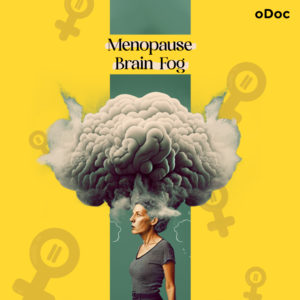
Menopause Brain Fog is real: A Simple Guide with Symptoms and Treatment
Menopause Brain Fog is real: A Simple Guide with Symptoms and Treatment Women in their 40s and 50s who are just entering the end of

How to Keep Work Stress from Taking Over Your Life
How to Keep Work Stress from Taking Over Your Life In today’s fast-paced and competitive world, work stress has become an all-too-common problem that affects
